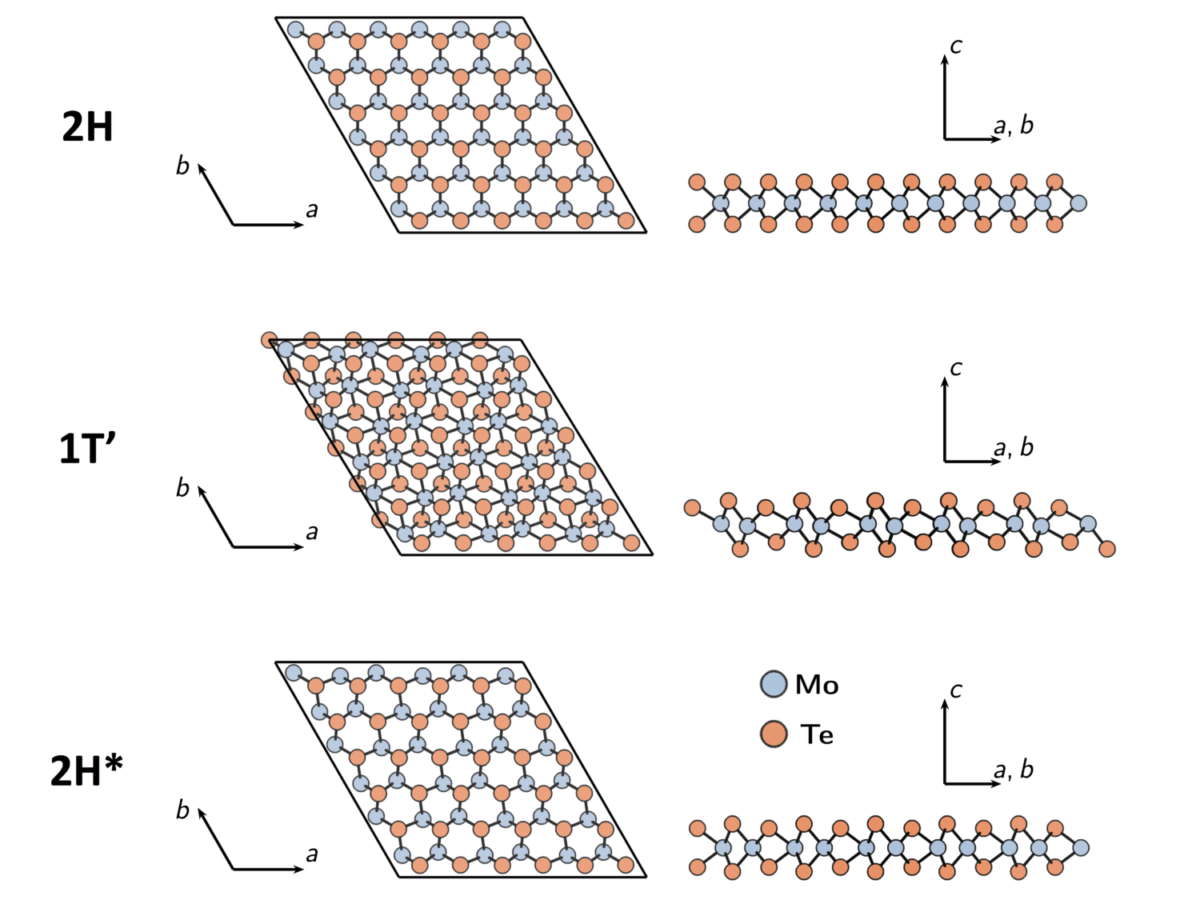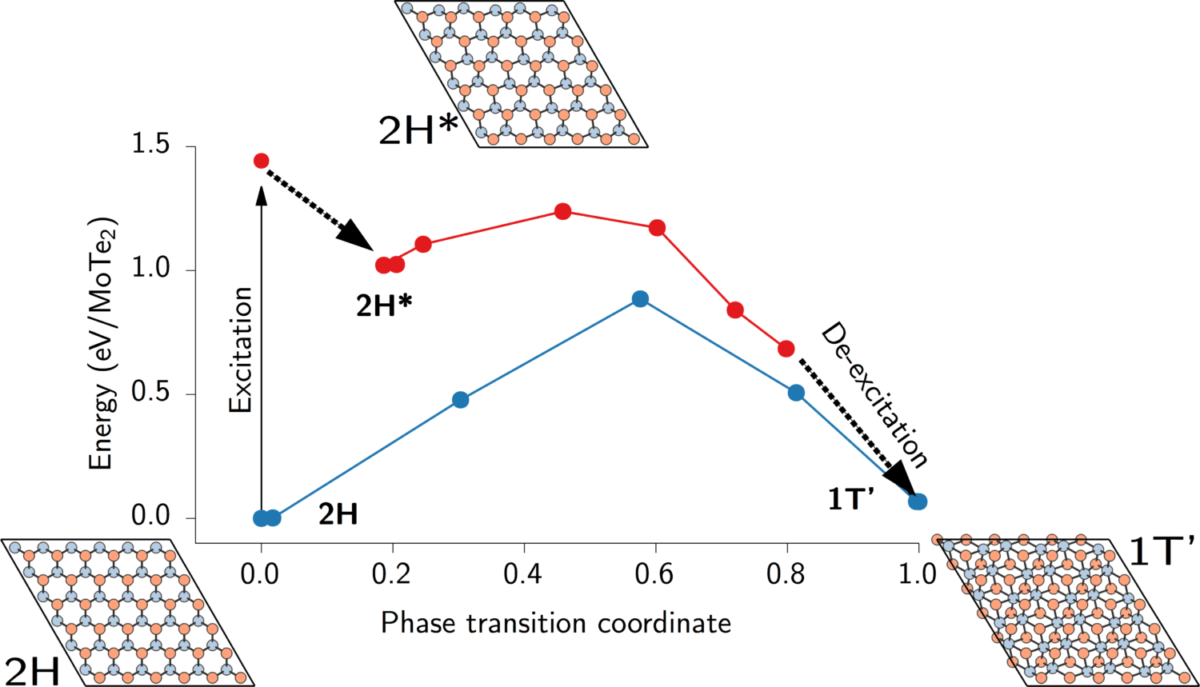Phase Transitions
Monolayer transition metal dichalcogenides (TMDCs) exhibit a large degree of polymorphism in crystal structures (2H, 1T and 1T') leading to a wide array of differing physical and chemical properties.

Two stable (2H and 1T') and one metastable (2H*) atomic structures of the MoTe2 monolayer crystal
A collaborative effort from University of Southern California, Rice University and SLAC have identified that strong optical excitations induce lattice instabilities in monolayer TMDC crystals that lead to formation of high-energy metastable crystal structures

Emergence of lattice instabilities (denoted by negative frequencies in the phonon band structure) due to optical excitation of the MoTe2 monolayer
These metastable crystal structures provide low-energy pathways for phase transformations between the semiconducting and metallic polymorphs of TMDC, leading to the formation of lateral semiconducting-metallic heterojunctions, which are critical for 2D optoelectronic devices.

Energy barrier in the optically excited crystal (red) are much lower than those in the unexcited crystal (blue) suggesting a new pathway for phase transitions
Publications
- Rapid semiconductor-to-metal phase transition in MoTe2 monolayers enabled by electronic excitation. A. Krishnamoorthy, L. Bassman, R. Kalia, A. Nakano, F. Shimojo, P. Vashishta, Submitted
PIs involved in this research
- Aiichiro Nakano, Priya Vashishta (USC)
- Pulickel Ajayan (Rice)
- Uwe Bergmann, David Fritz (SLAC)

